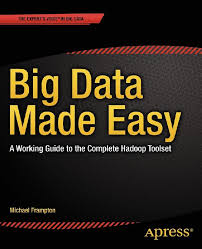Data Scraping and Data Mining from Beginner to Pro with Python
This white paper explores data scraping and mining with Python, from basic concepts to advanced techniques. We'll cover essential libraries, ethical considerations, practical applications, real-world use cases, and relevant Git repositories to aid your learning journey.
Introduction
Data is crucial for modern decision-making. Python, with its rich libraries, is ideal for data scraping and mining. This paper provides the knowledge, tools, and resources to effectively leverage this power.
Part 1: Data Scraping with Python
Data scraping extracts data from websites. Key Python libraries include:
- Beautiful Soup: Parses HTML and XML, enabling navigation and element extraction. Example: Extracting product details from e-commerce sites. Use Case: A market research company scrapes product prices from competitor websites to analyze market trends and identify pricing opportunities.
- Requests: Makes HTTP requests to fetch webpage content. Example: Retrieving HTML source code. Use Case: A news aggregator scrapes articles from various sources using Requests and Beautiful Soup to provide up-to-date news summaries.
- Scrapy: A framework for building web scrapers, handling requests, parsing, and storing data. Ideal for complex projects. Example: Crawling forums and extracting posts. Use Case: A social media analytics company uses Scrapy to collect user data for sentiment analysis and trend identification.
- Selenium: Automates web browsers for scraping dynamic content loaded by JavaScript. Example: Scraping data from AJAX-heavy websites. Use Case: An e-commerce company uses Selenium to scrape customer reviews, even if they are loaded dynamically, to understand customer sentiment and improve product offerings.
Ethical Considerations
Responsible scraping is vital. Respect robots.txt, avoid overloading servers, and adhere to terms of service. Never use scraped data unethically or for illegal activities. Be mindful of copyright and data privacy regulations.
Part 2: Data Mining with Python
Data mining discovers patterns from datasets. Python libraries include:
- Pandas: Manipulates and analyzes data using DataFrames. Example: Reading CSV data, filtering, and calculating statistics. Use Case: A financial analyst uses Pandas to clean and process stock market data to identify investment opportunities.
- NumPy: Numerical computing with arrays and matrices. Example: Mathematical operations on datasets. Use Case: A scientist uses NumPy for statistical calculations on experimental data to validate hypotheses.
- Scikit-learn: Machine learning algorithms for classification, regression, clustering. Example: Training a model to predict customer churn. Use Case: A marketing team uses Scikit-learn to segment customers based on demographics and purchase history to personalize marketing campaigns.
- NLTK: Natural language processing for text data. Example: Sentiment analysis of reviews. Use Case: A customer service team uses NLTK to analyze customer feedback and identify common issues to improve customer satisfaction.
Data Mining Techniques
- Classification: Assigning data to categories. Example: Spam detection.
- Regression: Predicting continuous values. Example: House price prediction.
- Clustering: Grouping similar data. Example: Customer segmentation.
- Association Rule Mining: Discovering relationships. Example: Market basket analysis.
Part 3: From Beginner to Pro
- Beginner: Python basics, Beautiful Soup, Requests, static website scraping.
- Intermediate: Scrapy, Selenium, Pandas, NumPy.
- Advanced: Scikit-learn, NLTK, data pipelines, open-source contributions.
Applications
- Market Research: Competitor analysis, pricing intelligence.
- Sentiment Analysis: Customer feedback analysis, brand monitoring.
- Lead Generation: Identifying potential customers, targeted marketing.
- Financial Analysis: Stock price prediction, risk assessment.
- Academic Research: Data collection, hypothesis testing.
Git Repositories (Examples - Search for more specific repos)
It's crucial to understand that many repositories are for illustrative purposes. Always evaluate the code's quality, maintainability, and license before using it in your projects.
- General Web Scraping Examples: Search GitHub, GitLab, and Bitbucket for repositories containing "Python web scraping," "Beautiful Soup examples," "Scrapy projects," etc.
- Data Mining Projects: Search for repositories related to "Python data mining," "machine learning projects," "natural language processing with NLTK," etc.
- Specific Use Cases: If you have a specific use case in mind (e.g., "scraping real estate data"), search for repositories related to that.
Example (Illustrative - Search for better examples):
# (This is just a placeholder - you'll need to find a real repo on GitHub or similar) # Example: Scraping product data from an e-commerce website # https://github.com/someuser/ecommerce-scraper (Replace with a real link)
Conclusion
Mastering Python for data scraping and mining unlocks data's potential. Practice ethical scraping and respect privacy. Continuous learning and exploring resources like Git repositories are essential.
References
Books:
- Beazley, D. M. (2013). Python Cookbook. O'Reilly Media.
- McKinney, W. (2017). Python for Data Analysis. O'Reilly Media.
- VanderPlas, J. (2016). Python Data Science Handbook. O'Reilly Media.
Websites:
- Beautiful Soup Documentation: https://www.crummy.com/software/BeautifulSoup/bs4/doc/1
- Scrapy Documentation: https://scrapy.org/en/latest/
- Pandas Documentation: https://pandas.pydata.org/docs/
- Scikit-learn Documentation: https://scikit-learn.org/stable/documentation.html
- NLTK Book: https://www.nltk.org/book/
Articles/Tutorials:
- (Search for specific tutorials on web scraping with Beautiful Soup, Scrapy, Selenium, and data mining techniques using Pandas, Scikit-learn, and NLTK. Real Python, Towards Data Science, and DataCamp are good starting points).
Remember to replace placeholder Git repository links with real ones you find on code-sharing platforms. It's crucial to evaluate the quality and licensing of any code you find online. Focus on finding repositories that demonstrate the techniques discussed in the white paper and that are well-documented.



